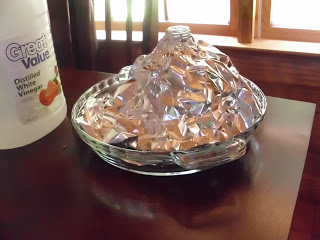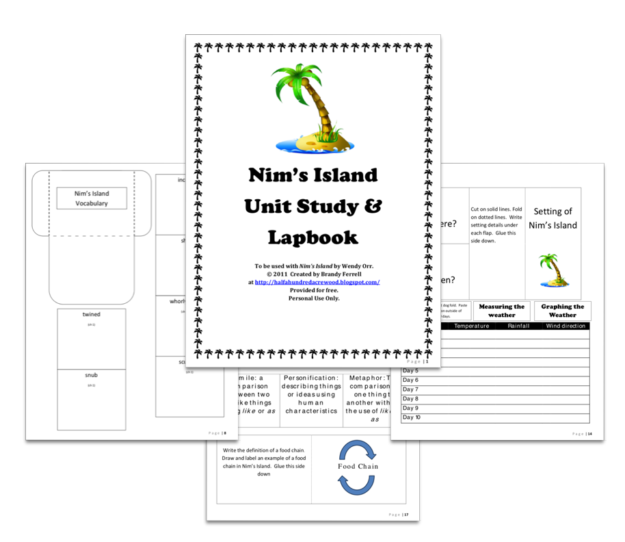
Sometimes I get in over my head on something. Like telling Stephen we could lapbook Nim’s Island, only to find that there were no lapbook templates out there for us to use. Thus, we embarked on an adventure as mother and son, creating our first lapbook from scratch. An unexpected benefit from doing this was that now Stephen could freely tell me where I messed up, what I could have done better, how I could have been more organized and how I could have made it more colorful. He was a great editor despite the fact that it was making me a tad bit batty at times, but it was a great learning experience for us both.
Although we completed this in about 2-3 weeks, I would recommend this to be a 6-8 week unit study, mainly because of all the science and imagery that ties into it. But Stephen would have gone bonkers if we had made him wait to read the book. In fact, his final reading was almost half the book (in one sitting!).
Click here to download the Nim’s Island Unit Study/Lapbook
Click here to download the Nim’s Island Lesson Plan
The science connections in this book are as follows:
- Weather, Hurricanes, and Storms
- Ecology & Rainforests
- Oceanography (with some cartography)
- Volcanoes & Geographical Features
- Zoology – Study of animals in Nim’s Island
Note: Some of the resources we used when we created this unit study seven years ago are no longer available for free on-line.
You can choose to survey each science topic for a week or two or go deep with one or two subjects.
For language arts, a study of imagery is in order. You can introduce adjectives, adverbs, personification, similes and metaphors because Nim’s Island contains a LOT of them.
To complete this as a 6-8 week study, you can read 2-3 chapters per week. A possible way to plan the first two weeks of your unit study is as follows:
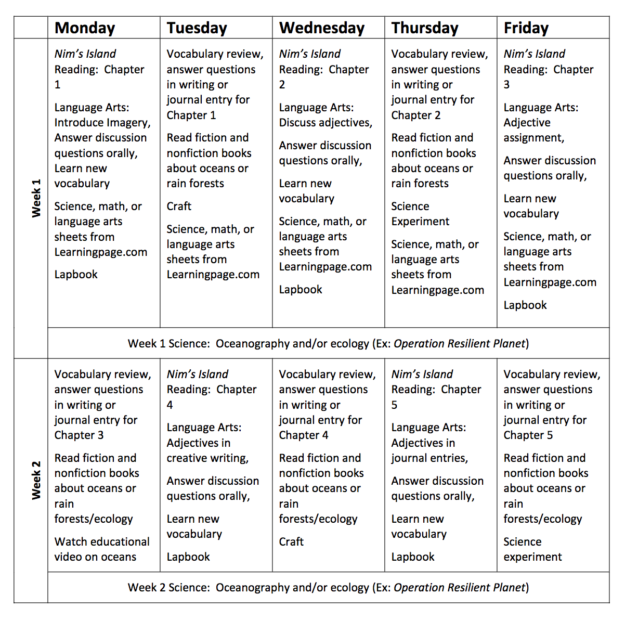
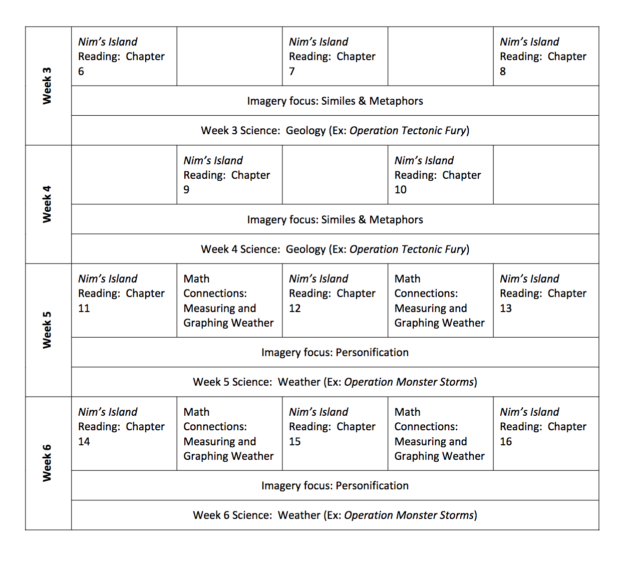 One of our favorite activities was a SUPER EASY science experiment using things most of us already have on hand. It took all of 5 minutes to prepare, and the kids LOVED it! This experiment will go well with a study on geology, volcanoes, or fascinating chemical reactions.
One of our favorite activities was a SUPER EASY science experiment using things most of us already have on hand. It took all of 5 minutes to prepare, and the kids LOVED it! This experiment will go well with a study on geology, volcanoes, or fascinating chemical reactions.The Easy-Way-to-Make-a-Volcano-Erupt Experiment
Materials needed:
- Pie plate
- Aluminum foil
- Small plastic water bottle
- Vinegar
- Dishwashing liquid
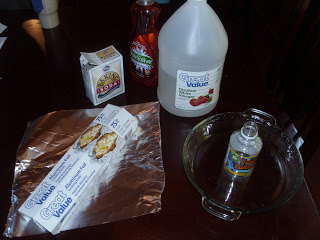 |
| Supplies to make a volcano |
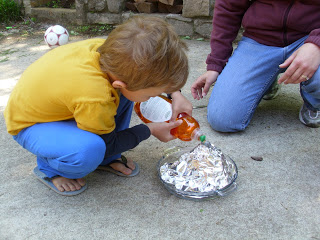 |
| David squirts about an inch of dish soap into the mouth of the water bottle. (Look how accurately we’re measuring… this is one science experiment where you don’t have to be exact.) |
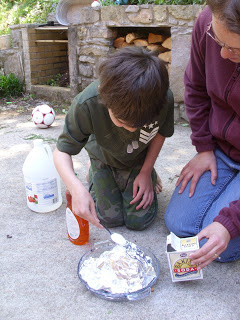 |
| Stephen places a few spoonfuls of baking soda into the mouth of the bottle. |
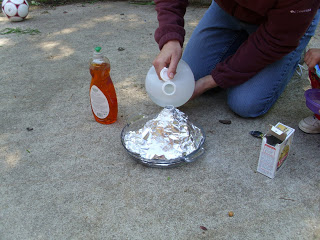 |
| I poured some vinegar in until it started foaming and bubbling up. |
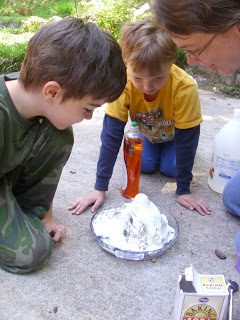 |
| TA-DA!! The kids wanted to do it again and again and again. Now the whole patio smells like vinegar. Much better than a dead, rotten shark, though. |
We also opened up coconuts for the first time ever and tasted the milk. We will use the shells to make little rafts to float down the creek. Read the book to find out why…
We also ate a fresh pineapple for lunch. It made it much more exciting to not eat it out of a can.
We also watched some REALLY cool on-line videos on plankton, hurricanes, tides, satellites, barometric pressure, weather and wind, and volcanoes.
The Nim’s Island and Lapbook Unit Study we created contains links to resources that are mentioned in this post. The Nim’s Island and Lapbook Unit Study is free for you to use, and I would LOVE for people to use it everywhere all over the globe multiple times over – that would just thrill us to death (and we’d love to hear about it, too)! When you share, please link to this blog post (not directly to the files) so that readers can see the extra details (e.g., unit study planning ideas) that are mentioned in this post but are not be mentioned in the document itself.
And here’s what lapbooking Nim’s Island looks like:
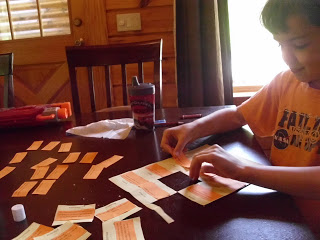 |
| Matching vocabulary with definitions |
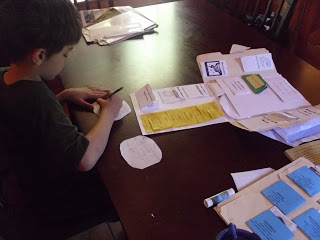 |
| Writing character descriptions |
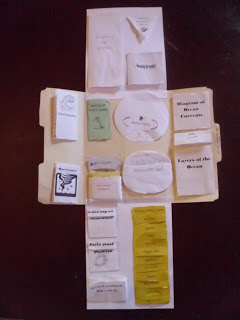 |
| Finished lapbook |

